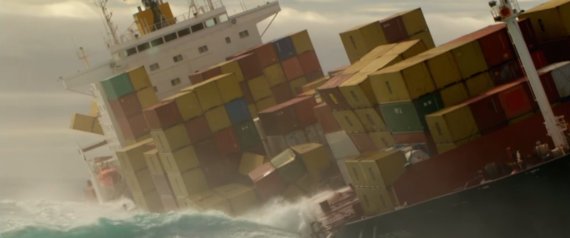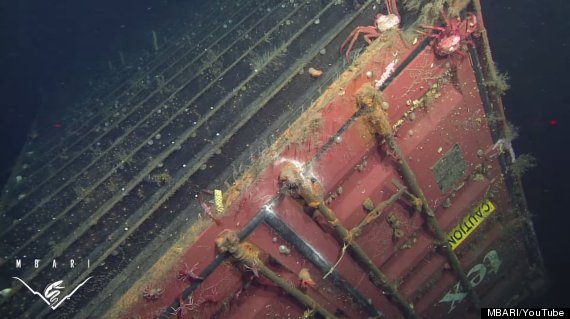Source: Huffington Post
Thousands Of Containers Fall Off Ships Every Year. What Happens To Them?
Posted: Updated:

There are about 5 to 6 million shipping containers crossing the sea at any time. The United States imports more stuff this way than any other country. That’s nearly 20 million rectangular metal boxes a year that include anything from toxic chemicals to Cheetos.
And, since the blustery sea is indifferent to our humanly possessions, it is estimated that thousands of containers are lost every year along international shipping routes due to big waves or wind gusts.
Sometimes they wash up on shore, but what happens to the containers that land at the bottom of the sea? No one really knew.
Until now.
Researchers at the Monterey Bay Aquarium Research Institute (MBARI) have been studying one of these containers for ten years after stumbling upon it while surveying the muddy Pacific ocean floor of the Monterey Bay National Marine Sanctuary. It is one of 24 containers lost from the vessel, Med Taipei, in a 2004 storm. And since the rules say you can’t dump in the national sanctuary, the shipping company paid NOAA a $3.25 million settlement, part of which funds studies that look at what happens when containers drop into the sea.

Andrew DeVogelaere of the sanctuary and Jim Barry of MBARI published their findings in the May 2014, issue of the journal Marine Pollution Bulletin.
It might not surprise you that the container disrupted the natural system down there, but the animals adapted.
For example, the physical presence of the container provided a surface that immobile animals, such as barnacles, could latch on to, an elevated place from which predators could hunt and it affected the currents at the floor, as well as the types of animals that live in them.
It also turns out that the hard surface of the container, which they presume didn’t degrade due to the near-freezing water temperatures some 4,200 feet down, provided a reef-like structure for tubeworms, snails, tunicates and scallops, but not sponges or corals, which are found on natural reefs nearby.
They’re not sure why this is, but the researchers speculate that it might be because the corals just haven’t had enough time to colonize the container’s surface, or the container was coated in some corrosion-resistant chemical that discouraged them from living there.
Josi Taylor, the lead author of the study, told BoingBoing.net that the container basically acts as an artificial reef. “Animals will be drawn to it because it provides a place to hide from predators. And then predators will be drawn to that.”
Indeed, “You’ll find life around just about anything you put down there,” she said.
Check out the video by the Monterey Bay Aquarium Research Institute.
